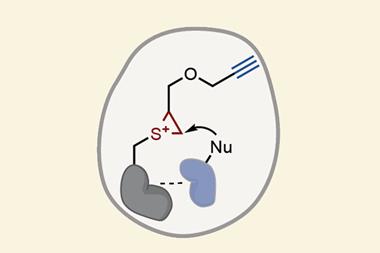Scientists hope new technique could probe individual CPU transistors to check their performance

Scientists in the US have developed a thermometer capable of detecting heat changes at the nanoscale. The technique, which combines conventional electron microscopy with energy-loss spectroscopy, may allow researchers to comprehensively assess the performance of individual transistors in a computer processor.
Since the dawn of the integrated circuit in the 1950s, which was made up of only a few transistors, computing power has grown at a staggering rate – many modern microprocessors now contain billions of transistors. Although Moore’s Law suggests that the number of transistors that can be squeezed onto a microprocessor will continue to increase, a physical limit will be reached when transistors cannot get any smaller. But this inevitable zenith is not the only limit on processing performance.
‘A CPU is an array of transistors [with] a big block of silicon underneath,’ explains Matthew Mecklenburg from the University of Southern California, US. ‘It’s the simplest possible heat sink you can think of and the big problem … is how we get rid of the heat.’
Mecklenburg argues that in order to understand how you can get rid of this heat, you first need to characterise temperature variations across the device. But conventional techniques, such as the use of contact thermometers or radiative measurements, are simply inadequate as they either induce heat in the device or provide poor spatial resolution.
Inspired by the classical mercury thermometer, Mecklenburg and his colleagues realised that thermal expansion within the device may hold the answer. ‘You have a little thermal expansion and the material becomes less dense,’ says Mecklenburg. Specifically, this density change is due to charge vibrations in the metal and can be readily detected using a transmission electron microscope (TEM) at nanometre resolutions without the need for contact between the probe and sample.
The team heated an aluminium wire within the TEM chamber and fired electrons at the sample as the probe was scanned across it. The electrons pass through and lose energy as they induce charge oscillations in the metal – the severity of which depends on the material’s electron density. As this density depends on heat, they were able to compute the temperature to a resolution of 4K by comparing the heated wire with a room temperature reference. They call their technique plasmon energy expansion thermometry (PEET).
Mecklenburg explains that the aluminium behaves as its own ‘local thermometer’ and, if modified, could be used to detect temperature over a small area in general electron microscopy. ‘What I’d really like to see is when people [carry out] heating measurements in a TEM, is they put down small aluminium nanoparticles next to their sample and use that as a local thermometer.’ But Mecklenburg also hopes PEET will eventually be used to probe the performance of individual transistors isolated from a microprocessor.
‘It’s interesting, in such a way that it is a new technique not used [before] to measure temperature at such small scales,’ says Luís António Dias Carlos, vice-director of the Centre for Research in Ceramics and Composite Materials, Portugal. But he questions the current temperature resolution for PEET. ‘In [other] non-contact techniques, for instance luminescence thermometry, it is possible to obtain [resolutions] around 0.1K.’
The team estimate, however, that a temperature resolution of less than 1K may be possible in future using PEET.











No comments yet